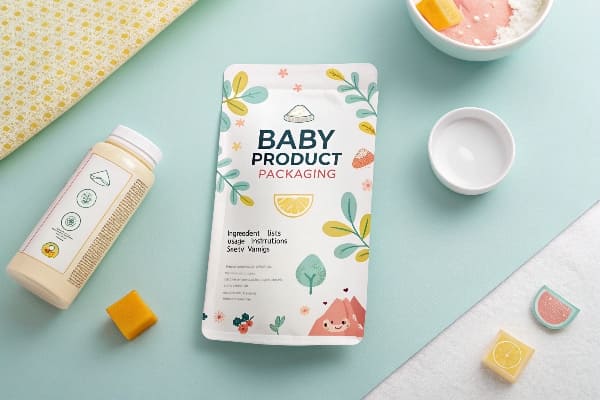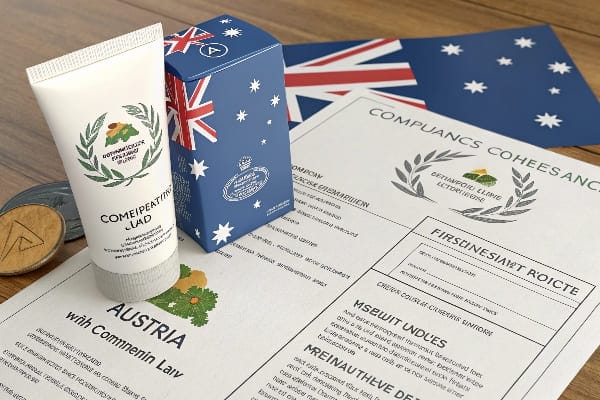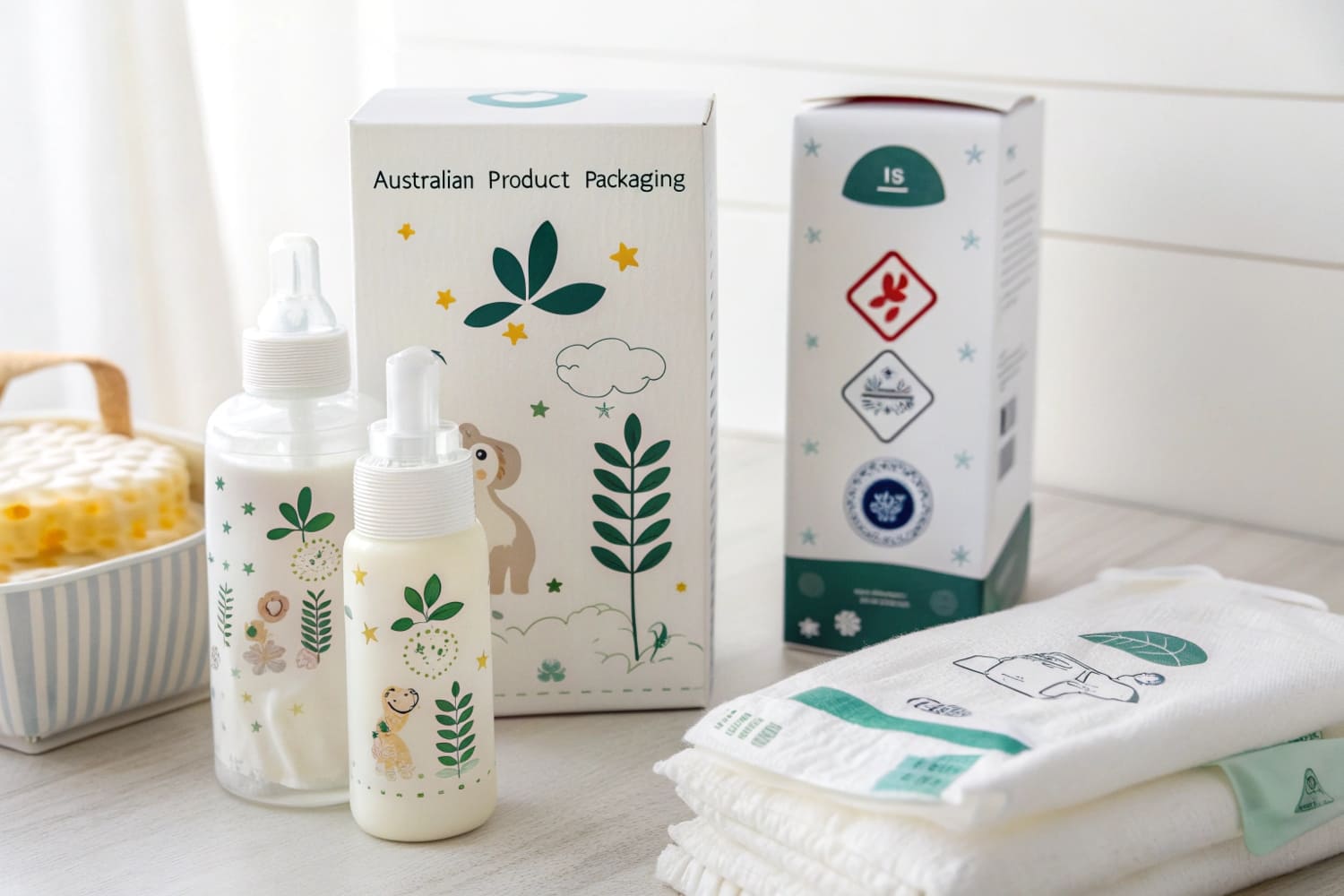Я вижу, как детские упаковки не проходят проверку. Задержки мешают запускам. Я создаю картонные витрины и упаковки для брендов. Теперь я использую простой контрольный список для Австралии и США.
Используйте контрольный список для двух рынков: Австралия — Закон Австралии о защите прав потребителей, объём нетто для торговых измерений, информация об упаковке, предупреждения о батарейках-таблетках, этикетка ARL для переработки; США — этикетки отслеживания CPSIA/CPSC, предупреждения об удушье, ASTM F963, страна происхождения CBP, заявления о происхождении FTC. Создайте файлы с пробными образцами и стандартизируйте двуязычные иллюстрации.

Я постараюсь придерживаться практики. Покажу, что печатать, где и когда тестировать. Также поделюсь историей о заводе, которую вы можете скопировать.
Каковы требования на этикетке пакета в Австралии?
Я прохожу австралийские проверки, заранее планируя этикетки. Я делаю заявки простыми. Указываю чистый объём в метрических единицах. Указываю данные о компании. Сначала добавляю предупреждения о безопасности.
В Австралии в соответствии с Законом Австралии о защите прав потребителей требуются правдивые заявления, маркировка метрической чистой величины, которая соответствует правилам торговых измерений, наименование и адрес упаковщика в случае местной упаковки, а также обязательные предупреждения, такие как символы батареек-таблеток, где это применимо; широко используются рекомендации ARL по переработке.

Что должно быть указано в упаковке вашего детского чемодана AU
| Элемент | Что включить | Основа правил |
|---|---|---|
| Правдивые заявления | Избегайте любых вводящих в заблуждение или обманных заявлений на лицевой и оборотной сторонах, а также на вкладышах. | Закон Австралии о защите прав потребителей (ACL)1 |
| Количество нетто | Метрические единицы, разборчивый размер и размещение | Национальные законы об измерениях в торговле |
| Подробности бизнеса | Название и адрес упаковщика (если упаковка осуществляется в Австралии) | Руководство по измерению торговли |
| Значки/текст безопасности | Символ и текст на передней панели батарейки-таблетки/таблетки, если изделие их использует | Стандарт информации о батарейках таблеточного и монетного типа |
| Руководство по переработке | Значок ARL устанавливается после проверки PREP (рекомендуемая практика, часто требуется розничным продавцом) | Программа APCO ARL2 |
Когда я разрабатывал упаковку ночника для детского бренда, инженер хотел разместить небольшое предупреждение на боковой панели. Я перенёс символ батарейки-таблетки на лицевую сторону и увеличил контрастность. Импортёр прошёл проверку с первой попытки и избежал брака при печати. ACL запрещает вводящую в заблуждение деятельность. Правила измерения объёма нетто в торговле №3 устанавливают форматы для измерения чистой массы. Стандарты для батареек-таблеток требуют наличия видимых предупреждений на передней панели. ARL основан на фактических данных и помогает розничным продавцам проверять дизайн.
Каковы 7 основных шагов для дизайна упаковки?
Я использую фиксированный маршрут. Это сохраняет скорость и контроль. Это также предотвращает хаос в конце. Моя команда знает порядок и порядок передачи задач.
Мои семь шагов: брифинг, исследование, структура сроков, визуальная концепция, соответствие требованиям, прототип и тестирование, а также передача готового к печати продукта с контролем качества производства. Заблокируйте каждый шаг, прежде чем двигаться дальше.

7 шагов на практике и контрольные точки соответствия
| Шаг | Что я доставляю | контрольно-пропускной пункт Африканского союза | контрольно-пропускной пункт США |
|---|---|---|---|
| 1. Краткое описание | Целевой пользователь, розничный канал, опасности | Определить обязательные стандарты AU (игрушки, батарейки) | Классифицировать как детский продукт; перечислить правила Комиссии по безопасности потребительских товаров (CPSC) |
| 2. Исследование | Пакеты конкурентов, претензии | Проверьте слова риска ACL и необходимые доказательства | Проверьте FTC/государственное происхождение и риски, связанные с заявлениями о безопасности |
| 3. Структура | Линии, панели, зоны выноски | Зарезервируйте место для метрических данных о количестве нетто и подробностей о бизнесе | Оставьте место для этикетки отслеживания и предупреждений. |
| 4. Визуальная концепция | Цвет, тип, значки | Создайте высококонтрастную панель безопасности | Соблюдайте соотношения и размещение формата предупреждений CPSC |
| 5. Содержание соответствия4 | Юридическая копия, символы | Требования, соответствующие ACL; проект ARL | Ссылки CPSIA, предупреждения 16 CFR, примечания ASTM F963 |
| 6. Прототип и тест5 | Печатный образец | Проверить читаемость; размер значка кнопки-батареи | Проверяйте этикетки для отслеживания; проводите проверки мелких деталей |
| 7. Передача и контроль качества | Файлы для печати, спецификации | Окончательное утверждение по контрольному списку AU | Окончательное одобрение по контрольному списку США |
Для игрушек, предназначенных для США, я размещаю этикетку отслеживания CPSC № 6 и, по возможности, на внешней упаковке. Я также наклеиваю этикетку с предупреждением об опасности удушья, если изделие соответствует требованиям 16 CFR 1500.19. Для игрушек я привожу изображение в соответствие со стандартом ASTM F963-23, который CPSC теперь требует в соответствии с 16 CFR, часть 1250. Я добавляю маркировку страны происхождения в соответствии с 19 USC §1304 и её правилами в 19 CFR, часть 134. Я храню Сертификат детской продукции (CPC) № 7 с перечнем всех правил. Это экономит время в течение нескольких недель.
Какой австралийский закон регулирует то, что австралийские предприятия могут поставить на упаковку?
Я слежу за словами на лицевой стороне. Я проверяю корректуру каждого утверждения. Я отклоняю слабые утверждения ещё до начала работы над произведением.
Закон Австралии о защите прав потребителей (Приложение 2 к Закону о конкуренции и защите прав потребителей 2010 года) регулирует требования к упаковке. Он запрещает вводящую в заблуждение или обманную деятельность, а также ложные заявления на этикетках и в маркетинговых материалах.

Как ACL формирует детскую упаковку
| Тип претензии | Чего ожидает ACL | Доказательство я храню |
|---|---|---|
| Эффективность («успокаивает за 5 минут») | Обоснование перед использованием | Отчеты об испытаниях, резюме исследований |
| Безопасность (« защита от детей, дверца батарейного отсека 8 ») | Соответствие обязательным стандартным условиям | Лабораторные фотографии, сертификаты испытаний |
| Происхождение (« Сделано в Австралии 9 ») | Соблюдайте правила ACL в отношении страны происхождения или безопасных гаваней | Спецификация материалов поставщика, маршрутизация с расчетом стоимости, декларации |
| Экологический («пригодный для вторичной переработки») | Доказательства утверждения и контекст | Результат PREP, одобрение художественного оформления ARL |
ACL распространяется на этикетки, вкладыши и онлайн-листинги. Раздел 18 запрещает вводящее в заблуждение или обманное поведение10 . ACCC обеспечивает соблюдение правил в отношении ложных или вводящих в заблуждение заявлений. Заявления о стране происхождения должны соответствовать четким критериям и принципам защиты «безопасной гавани». Если в детском ночнике используются батарейки-таблетки, вы также должны следовать стандарту информации о батарейках-таблетках № 11 для предупреждений. Я храню файл с пробными образцами для каждого заявления до утверждения дизайна. Когда бренд однажды написал «100% перерабатываемый» без проверки PREP, я остановил печать. Мы провели PREP, обновили до ARL «Проверяйте локально» и прошли регистрацию розничных продавцов.
Что такое 4 C упаковки?
Я использую простую модель для принятия решений. Она работает в условиях давления. Команды её запоминают. Она ускоряет процесс проверки.
Мои 4 «К»: соответствие требованиям, ясность, достоверность и удобство. Я разрабатываю дизайн, прежде всего, с учётом закона, пишу понятные тексты, доказываю каждое утверждение и делаю упаковки удобными для вскрытия, хранения и переработки.

Моя структура 4C для детских рюкзаков
| В | Что я делаю | контрольно-пропускные пункты Австралии | контрольно-пропускные пункты США |
|---|---|---|---|
| Согласие12 | Начните с закона, затем дизайн | Защита ACL, измерение чистого количества товаров, предупреждения о разряде батареи, ARL | Правила CPSIA/CPSC, этикетки для отслеживания, предупреждения об удушье, ASTM F963-23, знак COO |
| Ясность | Используйте простые слова и крупный шрифт | Преимущества передней панели, читабельные размеры | Формат предупреждения CPSC, четкая возрастная градация |
| Доверие | Подтвердите претензии с доказательствами | Сводки результатов испытаний в файле с доказательствами | CPC, перечисляющий каждое правило; вести лабораторные отчеты |
| Удобство13 | Помощь розничным командам и родителям | Легко открывающиеся пломбы; руководство по переработке | Готовые к выкладке внешние коробки; сканируемое отслеживание |
Когда я запускал линию детских аксессуаров американского охотничьего бренда для массового производства, сроки были очень сжатыми. Я поставил «Соответствие» на первое место и заблокировал панель с предупреждениями перед началом работы с цветом. Я разместил код отслеживания CPSC 14 , чтобы отдел контроля качества мог его отсканировать на линии. Я создал общую папку с отчётами об испытаниях и черновиками CPC. Покупатель подписал заказ в течение 48 часов. Товар был отправлен вовремя. Я следую тем же инструкциям на картонных коробках и внутренних лотках, чтобы сотрудникам магазина не приходилось гадать. Маркировку игрушек я сверяю со стандартом ASTM F963-23 15 и законом Риза, если на изделии или аксессуаре есть элементы-пуговицы. Я печатаю страну происхождения рядом со штрихкодом, чтобы избежать ошибок при проверке.
Заключение
Дизайн прежде всего ориентирован на закон. Сделайте текст простым. Докажите каждое утверждение. Напечатайте правильные знаки. Протестируйте заранее. Экономьте время. Отправьте вовремя. Завоюйте доверие на обоих рынках.
Понимание ACL имеет решающее значение для соблюдения нормативных требований и защиты прав потребителей в Австралии. ↩
Изучение программы APCO ARL может помочь предприятиям улучшить свои методы переработки отходов и соответствовать нормативным стандартам. ↩
Изучение правил торговых измерений обеспечивает точность маркировки и соблюдение требований, предотвращая правовые проблемы. ↩
Понимание содержания требований имеет решающее значение для обеспечения соответствия вашего продукта правовым стандартам и предотвращения дорогостоящих штрафов. ↩
Изучение важности создания прототипов и тестирования может повысить качество вашего продукта и его готовность к выходу на рынок. ↩
Понимание маркировки отслеживания CPSC может помочь обеспечить соответствие требованиям и безопасность при производстве игрушек. ↩
Изучение CPC позволит лучше понять соблюдение нормативных требований и стандартов безопасности для детских товаров. ↩
Понимание стандартов безопасности для дверец батарейного отсека с защитой от детей имеет решающее значение для обеспечения безопасности и соответствия продукции требованиям. ↩
Изучение правил страны происхождения помогает обеспечить соответствие и подлинность маркировки продукции. ↩
Понимание этих правил имеет решающее значение для соблюдения требований и избежания юридических проблем в маркетинге. ↩
Этот стандарт имеет решающее значение для безопасности и соответствия требованиям, особенно для изделий, в которых используются батарейки-таблетки. ↩
Понимание требований имеет решающее значение для обеспечения безопасности и законности при проектировании детских упаковок. ↩
Использование стратегий повышения удобства может улучшить пользовательский опыт и повысить продажи на конкурентном рынке детских товаров. ↩
Понимание кода отслеживания CPSC имеет решающее значение для обеспечения безопасности продукции и соответствия требованиям, что может защитить ваш бренд и клиентов. ↩
Изучение стандарта ASTM F963-23 позволит вам лучше понять основные стандарты безопасности игрушек и гарантировать их соблюдение и безопасность для потребителей. ↩





